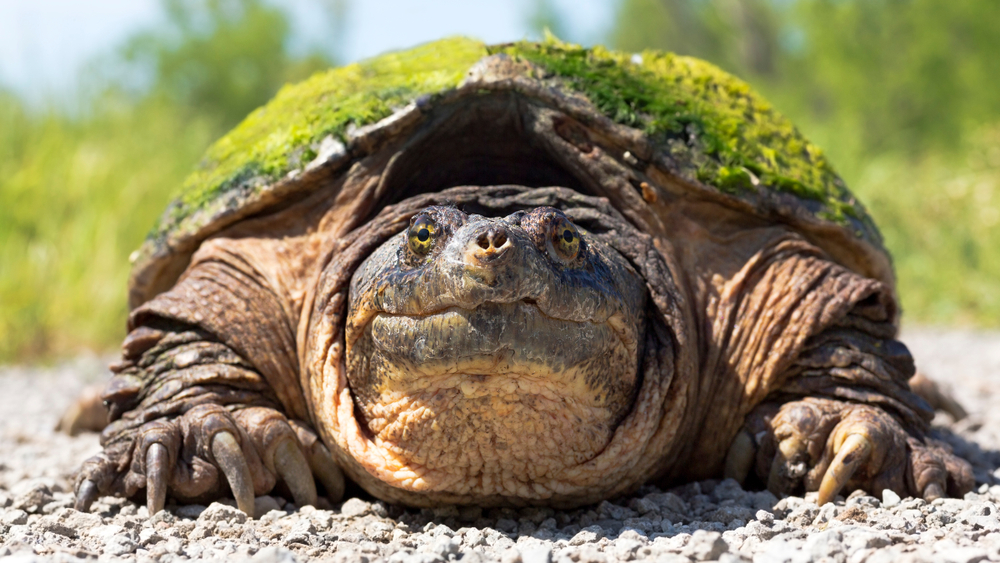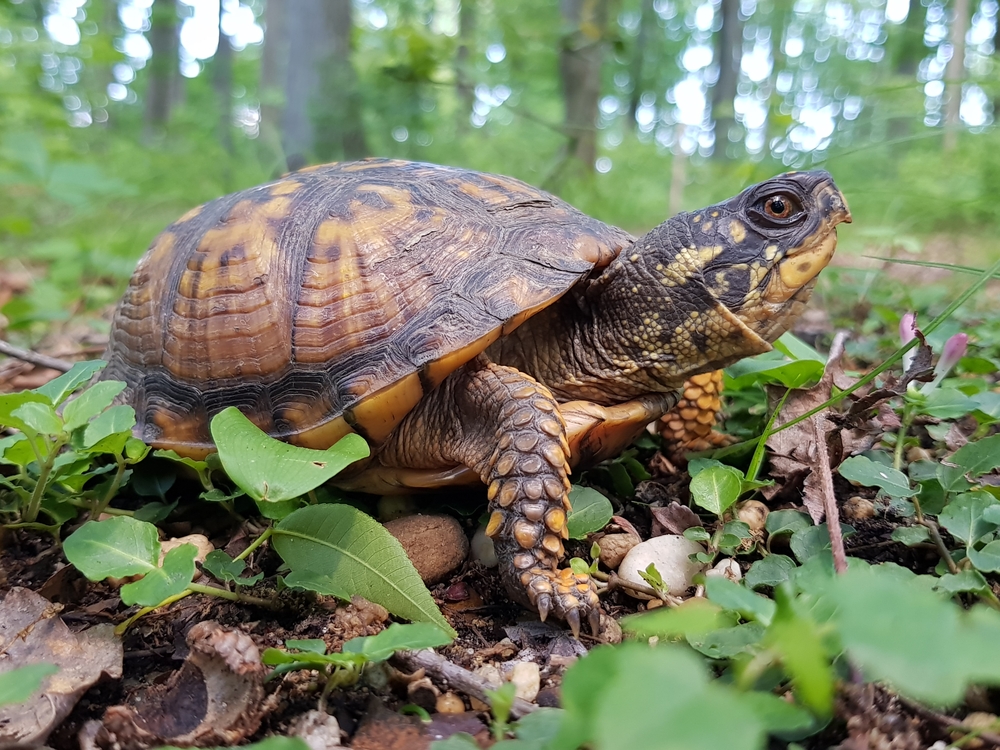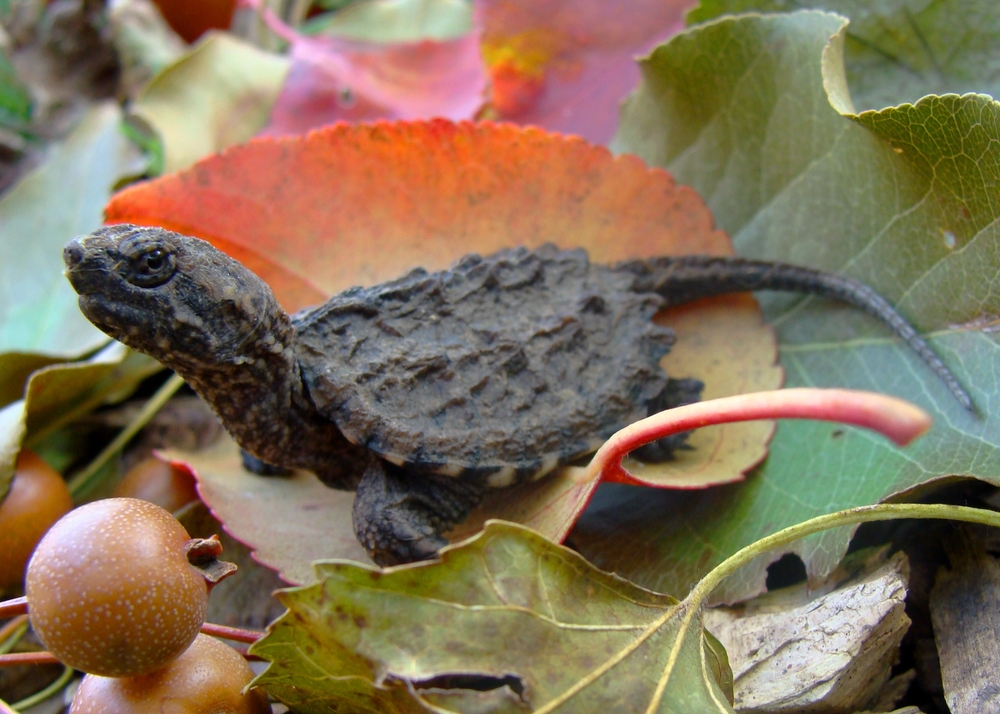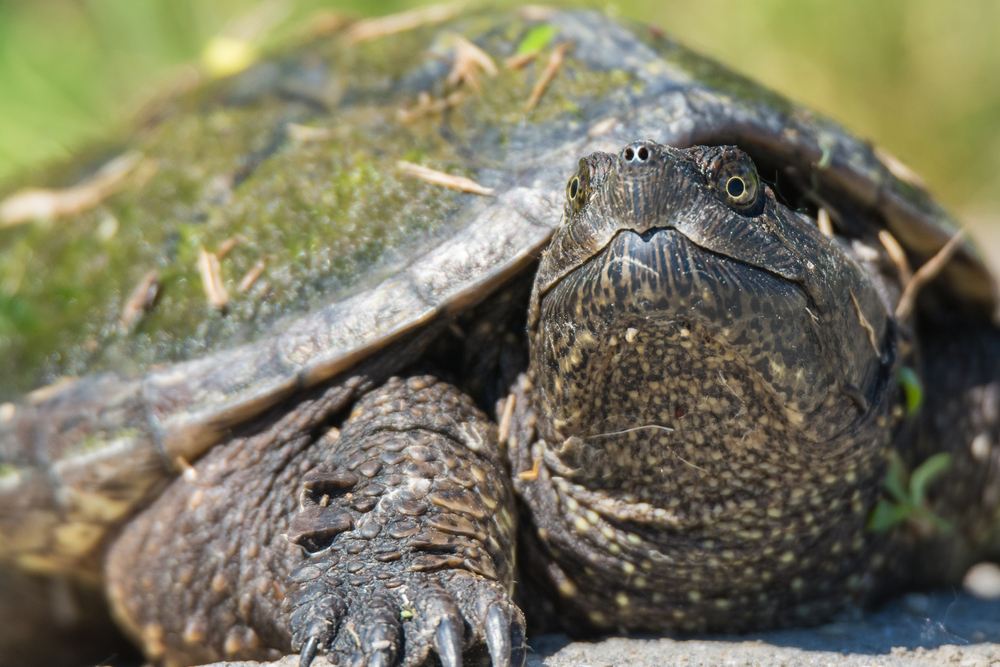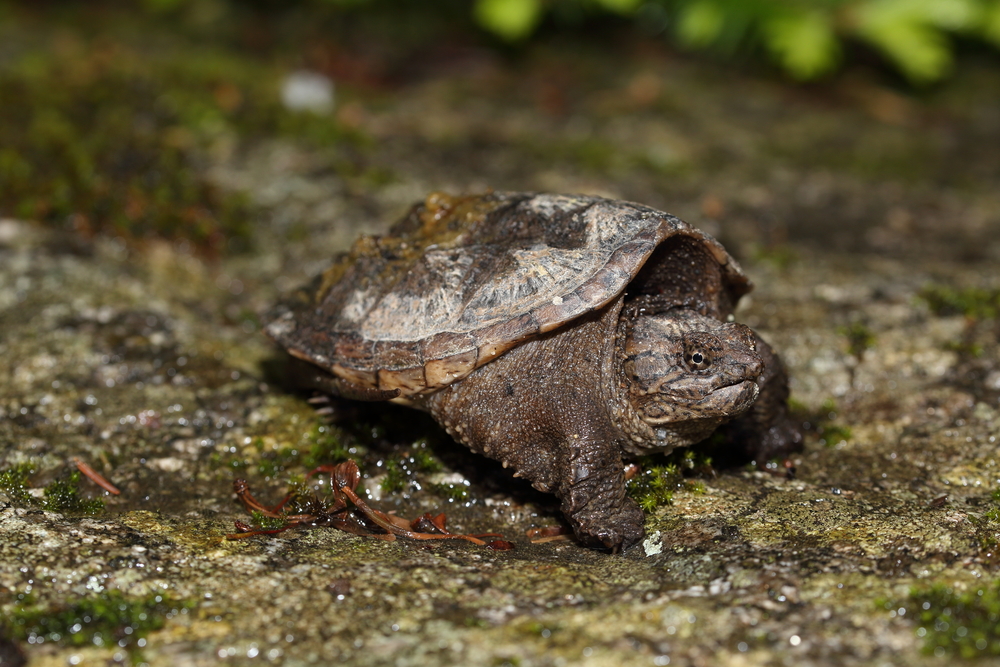About
#Omnivore
#Reptile
The Snapping Turtle, scientifically known as Chelydra serpentina, is a fascinating reptile belonging to the Animal Kingdom, specifically the class Reptilia and the family Chelydridae. These turtles are renowned for their distinctive appearance and behaviors, making them a notable and intriguing species.
Snapping Turtles are found primarily in freshwater habitats across North America, inhabiting various aquatic environments, including ponds, lakes, rivers, and marshes. They are well-adapted to both aquatic and terrestrial life, displaying a unique combination of aquatic habits and terrestrial foraging behavior.
Characterized by their large, rugged shells, strong jaws, and often cantankerous disposition, the snapping Turtle has a reputation for its powerful bite and its readiness to defend themselves when threatened. Their carapace (top shell) is dark brown to black, and their skin is typically covered in algae and aquatic plants, providing excellent camouflage.
These remarkable turtles have a unique life history, with females laying eggs on land in nests they dig themselves. Their hatchlings face numerous challenges as they embark on their journey to the water. Snapping Turtles play vital roles in freshwater ecosystems as both scavengers and predators, helping maintain the balance of aquatic life.
While these turtles may appear intimidating, they are essential components of their ecosystems, showcasing the diversity and resilience of reptilian life in North America. Understanding and conserving the Snapping Turtle is essential for preserving the health of our freshwater habitats and the delicate web of life within them.
Snapping turtles are opportunistic feeders and will consume a wide variety of prey, including fish, amphibians, insects, and even small mammals. They are known for their aggressive behavior and powerful bite, capable of inflicting serious injury to predators or humans if provoked.
Conservation Concerns:
Snapping turtles face various threats to their survival, primarily due to habitat loss, pollution, and human activities. Destruction of wetlands and freshwater habitats for urban development and agriculture reduces available habitat for these turtles, leading to population declines.
Pollution from agricultural runoff, industrial waste, and plastic pollution also contaminates waterways, affecting water quality and threatening the health of snapping turtle populations.
Threatened:
Extinct
Critically Endangered
Endangered
Vulnerable
Near Threatened
Least Concern































































